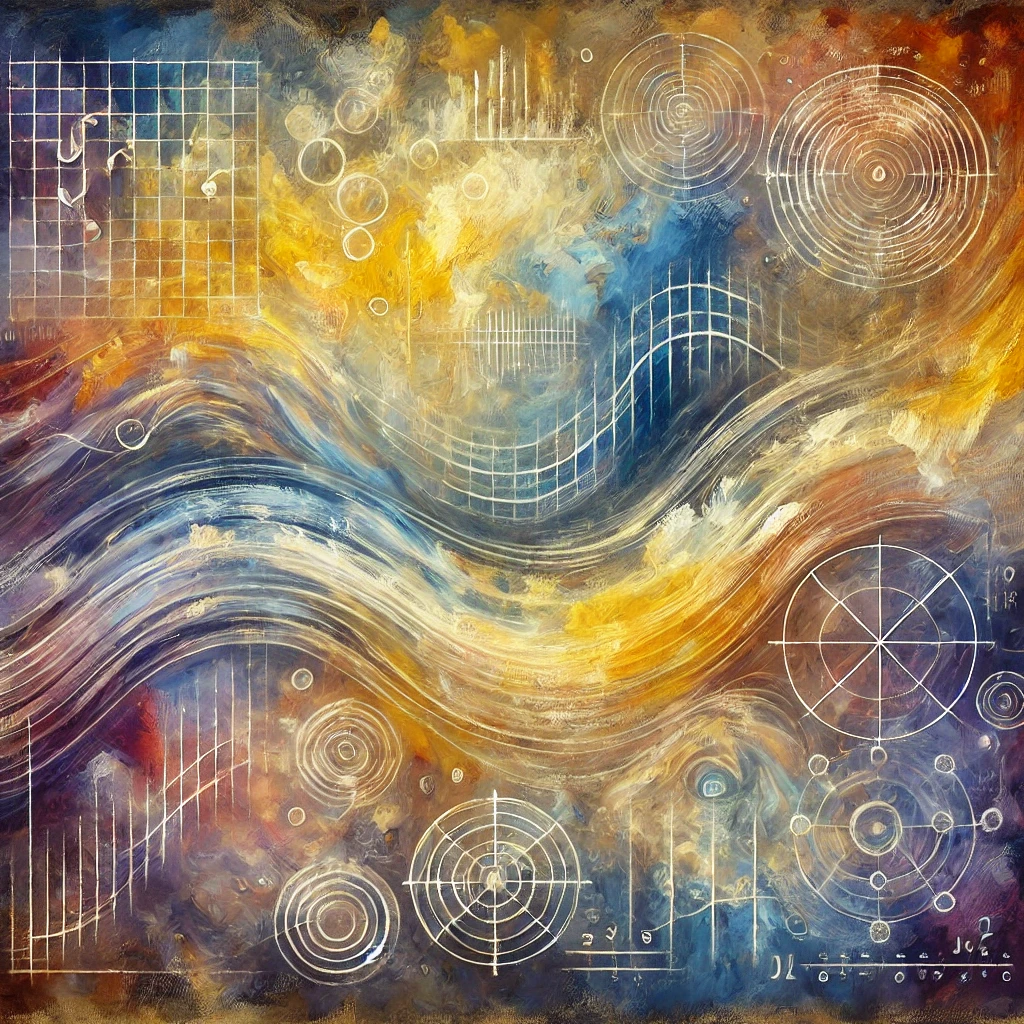
ChatGPT:
Music as Unconscious Mathematics: Rhythm, Patterns, and Emotional Flow in Composition
Introduction
Mathematician Gottfried Wilhelm Leibniz once said that music is the mathematics we perform without being aware of it. This idea underpins the relationship between rhythm, harmony, and emotional expression in music. Rhythm—the arrangement of sounds in time—is essentially a form of counting, while harmonic structures follow mathematical relationships that can evoke profound feelings. Yet, despite the underlying mathematics, composition is often an intuitive process, guided by the ear and emotional sense rather than by rigid calculation.
1. Music as Hidden Mathematics 🎼
The mathematical nature of music has long been recognized, but Leibniz’s statement highlights that this is often unconscious. While musicians may not consciously calculate when creating music, they engage with mathematical structures—especially rhythm and harmonic progressions—instinctively.
2. Rhythm as Counting 🕰
At its core, rhythm is counting. Whether in the simplest binary alternation of stressed and unstressed beats or in more complex time signatures, the sense of “pulse” in music comes from the human brain organizing sound into numerical groupings.
3. Binary Patterns and Repetition 🔄
The simplest rhythmic structure alternates between something and nothing—sound and silence. This creates a binary foundation (e.g., da-dum, da-dum) that can be repeated to form larger rhythmic units, naturally leading to time signatures like 2/4 and 4/4.
4. Expansion into Time Signatures 📏
By repeating binary patterns, composers create familiar time signatures:
- 2/4 (march-like)
- 3/4 (waltz)
- 4/4 (common time)
Each has a distinct feel, shaping the style and flow of a piece.
5. Waltz and the Three-Beat Feel 💃
The waltz’s three beats per measure provide a flowing, cyclical feel, distinct from the more straightforward march-like nature of 2/4 or the grounded groove of 4/4. Stress patterns within these signatures also vary, adding complexity.
6. Harmony and Emotional Travel 🎹
Beyond rhythm, harmony involves mathematical relationships between pitches. Movements by fifths—a key interval in Western music—often carry emotional weight:
- Ascending fifths: hopeful or uplifting
- Descending fifths: somber or melancholic
These patterns resonate with listeners because they mirror emotional journeys.
7. The Composer’s Ear vs. The Composer’s Math 🎧
Even highly mathematical composers often rely on intuition, making decisions based on what feels “right” rather than purely on calculated structure. This process is called writing by ear.
8. Emotional Logic in Composition ❤️
When a composer chooses a chord change because it feels sad, hopeful, or resolving, they are mapping emotional states onto mathematical structures. This blend of logic and feeling is central to how music communicates.
9. Sonification and Adjustment 🔬
In projects where data is turned into sound (sonification), the raw output may be mathematically correct but musically unsatisfying. Composers adjust such outputs to ensure they make emotional and aesthetic sense.
10. The Marriage of Structure and Intuition ⚖
Music thrives in the tension between order and creativity. Mathematics provides the skeleton—rhythm, proportion, harmonic relationships—while intuition provides the soul, shaping sound into something emotionally meaningful.
What did Leibniz mean by “music is the mathematics we perform unconsciously”?
Leibniz suggested that music follows mathematical structures, such as rhythm and harmony, but we often engage with them instinctively without realizing we’re doing mathematical thinking.
How is rhythm related to mathematics?
Rhythm is essentially counting—organizing sounds and silences into repeating patterns or time signatures. These numerical groupings create the pulse of music.
What is a binary rhythmic pattern?
A binary pattern alternates between stressed and unstressed beats (or sound and silence). Repeating these patterns leads to common time signatures like 2/4 or 4/4.
Why do some songs have three beats per measure, like in a waltz?
Three-beat measures create a cyclical, flowing feel distinct from binary rhythms. The waltz’s 3/4 time signature emphasizes this dance-like quality.
What role do fifths play in harmony?
Moving chords by intervals of a fifth creates strong emotional effects. Ascending fifths often sound uplifting, while descending fifths can feel somber.
What does “writing by ear” mean for a composer?
Writing by ear means relying on intuition and emotional response to choose notes, chords, and rhythms, rather than strictly following theoretical or mathematical rules.
Are all composers mathematical in their approach?
Not necessarily. While music inherently involves math, many composers primarily rely on intuition, using mathematics more as a hidden framework than as a conscious guide.
What is sonification in music?
Sonification is turning data into sound. While mathematically precise, raw sonifications often need adjustments to sound musically appealing.
Why do composers adjust mathematically accurate music?
Even perfectly structured music can lack emotional impact. Composers adjust it to align with human perception, taste, and feeling.
How do mathematics and intuition work together in music?
Mathematics provides the structure—rhythm, proportions, harmonic relationships—while intuition shapes these into emotionally resonant art.

